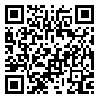Volume 3, Issue 4 (Winter 2014)
PTJ 2014, 3(4): 59-65 |
Back to browse issues page
Abstract: (9707 Views)
Abstract
Objective: Children with cerebral palsy have various movement and balance disorders. The lopsided anatomy of spastic cerebral palsy children, disrupt the balance function. This study was aimed to investigate the effect of core stability exercises on control of the static and dynamic posture in children with hemiplegic cerebral palsy. Materials & Methods: Participants were eight children with hemiplegic cerebral palsy selected by the simple, convenient method. Static balance was measured by force plate in the open eyes condition, dynamic balance by Y Balance Test (YBS) and the severity of cerebral palsy by Gross Motor Function Classification System) GMFCS(. Cerebral palsy children carried out core stability exercises progressively 3 times a week for 8 weeks, each session lasting 45 minutes. Paired t-test was used for statistical analysis of the data to compare pre and post-test scores in the subjects. The significance level was set at p≤0/05. Results: There was no significant difference in the excursion of center of pressure in anterior - posterior (p=0.124) and medial-lateral (p=0.202) directions before and after exercise in children with cerebral palsy however, a significant increase in the anterior-posterior and medial-lateral path length and total velocity was found (p =0.000). Comparison of the average dynamic balance score revealed significant increase after the intervention on both right and left legs in the anterior (p=0.015 and 0.183, respectively), posterior-lateral (p=0.005 and 0.004, respectively) and posterior-medial directions (P= 0.048 and 0.050, respectively) except for left foot in the anterior direction. Conclusion: Core stability exercises can improve dynamic balance in children with hemiplegic cerebral palsy while seems to have no considerable effect on static balance improvement of these children.
Objective: Children with cerebral palsy have various movement and balance disorders. The lopsided anatomy of spastic cerebral palsy children, disrupt the balance function. This study was aimed to investigate the effect of core stability exercises on control of the static and dynamic posture in children with hemiplegic cerebral palsy. Materials & Methods: Participants were eight children with hemiplegic cerebral palsy selected by the simple, convenient method. Static balance was measured by force plate in the open eyes condition, dynamic balance by Y Balance Test (YBS) and the severity of cerebral palsy by Gross Motor Function Classification System) GMFCS(. Cerebral palsy children carried out core stability exercises progressively 3 times a week for 8 weeks, each session lasting 45 minutes. Paired t-test was used for statistical analysis of the data to compare pre and post-test scores in the subjects. The significance level was set at p≤0/05. Results: There was no significant difference in the excursion of center of pressure in anterior - posterior (p=0.124) and medial-lateral (p=0.202) directions before and after exercise in children with cerebral palsy however, a significant increase in the anterior-posterior and medial-lateral path length and total velocity was found (p =0.000). Comparison of the average dynamic balance score revealed significant increase after the intervention on both right and left legs in the anterior (p=0.015 and 0.183, respectively), posterior-lateral (p=0.005 and 0.004, respectively) and posterior-medial directions (P= 0.048 and 0.050, respectively) except for left foot in the anterior direction. Conclusion: Core stability exercises can improve dynamic balance in children with hemiplegic cerebral palsy while seems to have no considerable effect on static balance improvement of these children.
Type of Study: Research |
Subject:
Special
Received: 2013/12/5 | Accepted: 2014/03/17 | Published: 2014/05/11
Received: 2013/12/5 | Accepted: 2014/03/17 | Published: 2014/05/11
| Rights and permissions | |
 |
This work is licensed under a Creative Commons Attribution-NonCommercial 4.0 International License. |


